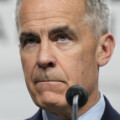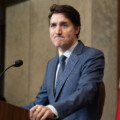Professor of globalization and development at Oxford University Ian Goldin’s new book, The Shortest History of Migration, challenges many of the negative assumptions about migrants behind Trump’s anti-immigration rhetoric and policies. He argues the opposite is true: migrants contribute significantly to job creation and growth, and countries who ignore this reality do so at their own peril.
Below is an excerpt from Ian Goldin’s book, The Shortest History of Migration.
Migration can be highly beneficial not only for migrants themselves but for the countries that send and receive them. This is not to mask the terrible suffering that still bedevils the experience of migration, or the pain of separation that migrants and their communities experience. Rather than limit migration, our response should be to improve the well-being of migrants and give them safer, more predictable, and cheaper ways to travel abroad and return home. Crafting a more humane and more open system that harnesses the tremendous benefits of increased migration, while minimizing and mitigating its costs, is a vital unresolved challenge.
A mature, evidence-based conversation about the pros and cons of migration is long overdue. We must attend to the real fears of individuals and communities about migration, not simply dismiss them out of hand. Facts are important, but so are perceptions—and they are rarely changed by facts alone. They reflect deep, everyday anxieties that stem from rising costs and other pressures. Many of these problems are the result of underinvestment in everything from housing to hospitals and roads to railways, but they also arise from staff shortages and travel restrictions. Migration can provide some answers.
Attitudes toward migration would likely change if people didn’t feel their backs were up against the wall or that elites were ignoring them. A bargain in which more migrants were accepted under strict conditions of rights and responsibilities should be politically feasible. Responsibilities would include abiding by the law, paying taxes, and agreeing to be documented. They would be balanced by rights—to equal treatment before the law, a minimum wage, and a healthy and safe workplace. Another crucial element of the bargain would be for governments to make a commitment to invest in the places where migrants settled. This would help allay the legitimate worries of locals about access to public health care, schools, housing, and other vital services.
A global migration agenda would need to be accepted by a host of diverse stakeholders and ideally would be embodied in an international agreement, advanced and defended by international law. But with the United Nations seemingly gridlocked, to wait for this to happen would be to delay progress indefinitely. The way forward therefore lies in building from the bottom up, through bilateral and regional agreements, such as those that already exist within the European Union and in West Africa.
In the end, humans will persevere in their desire to move, regardless of the obstacles in their way. Attempts to radically curtail migration will almost always fail. As Simone Weil is reported to have said, “The future is made of the same stuff as the present.” People will continue to migrate for the same reasons they do today: to improve their welfare, escape conflict and disasters, and explore opportunities. The increasingly complex, unstable, and interconnected world in which we are all entangled will prompt more and more people to move, with new virtual and physical links providing the knowledge and means to do so.
Migration has never been easy and its history is one of great loss and sadness, as well as discovery, opportunity, and remarkable progress. Migrants take exceptional risks and make enormous sacrifices, often on behalf of their families and future generations. When they arrive in foreign lands they are frequently mistreated or shunned as strangers. Yet they are catalysts for innovation and bridgeheads for future migrants. By bringing new ways of doing, thinking, and understanding, they challenge parochial attitudes and extend frontiers.
Migration is not a problem to be solved; it is the driving force for human progress and the thread that links our common history. If the history of migration has taught us anything, it is that we are all migrants and that we should embrace our common humanity to meet the existential challenges of the twenty-first century.
Excerpt from The Shortest History of Migration: When, Why, and How Humans Move—From the Prehistoric Peopling of the Planet to Today and Tomorrow’s Migrants © Ian Goldin, 2025. Reprinted by permission of the publisher, The Experiment. Available everywhere books are sold. theexperimentpublishing.com.








